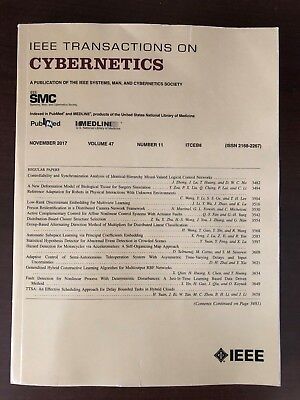学习距离约束变换用于汽车跟踪视频跟踪
IF 10.5
1区 计算机科学
Q1 AUTOMATION & CONTROL SYSTEMS
引用次数: 0
摘要
判别相关滤波器在视频跟踪方面的最新进展利用了多种观测模型。然而,将手工制作和深度卷积神经网络表示等同地融合会过度限制模板匹配的分辨率条件,导致峰值响应滑移和紧张的邻居搜索过程,特别是在自动驾驶场景中。本文讨论了多类型特征跟踪中的推理保守性问题。我们提出了一个目标-观测约束框架来形式化特征映射通道上的区分保守性。引入了一种学习约束转换方法来聚类相似的表示,同时将不相似的表示分开。这些判别约束通过与相关滤波器的联合学习进一步微调,提高检测响应的定位精度。此外,我们提出了一种抑制低分数对称色散比的更新策略,增强了跟踪的鲁棒性。对五个跟踪数据集的广泛评估表明,我们的方法具有卓越的性能:UAV20L、UAVDT、OTB-100、VOT-2019和LaSOT。本文章由计算机程序翻译,如有差异,请以英文原文为准。
Learning Distance Constrained Transformation for Video Tracking in Car-Following
Recent advances in video tracking with discriminative correlation filters leverage diverse observation models. However, fusing hand-crafted and deep convolutional neural network representations equivalently would overly constrain resolution conditions for template matching, leading to peak response slippage and jittery neighboring search processes, especially problematic in autonomous driving scenarios. This article addresses the inference conservatism issue in multitype feature tracking. We propose a target-observation constraint framework to formalize discrimination conservatism across feature map channels. A learning constraint transformation methodology is introduced to cluster similar representations while pushing dissimilar ones apart. These discriminant constraints are further fine-tuned through joint learning with correlation filters, improving the positional precision of detection responses. Additionally, we propose an updating strategy that suppresses low scores of symmetric dispersion ratio, enhancing tracking robustness. Extensive evaluations on five tracking datasets demonstrate the superior performance of our approach: UAV20L, UAVDT, OTB-100, VOT-2019, and LaSOT.
求助全文
通过发布文献求助,成功后即可免费获取论文全文。
去求助
来源期刊

IEEE Transactions on Cybernetics
COMPUTER SCIENCE, ARTIFICIAL INTELLIGENCE-COMPUTER SCIENCE, CYBERNETICS
CiteScore
25.40
自引率
11.00%
发文量
1869
期刊介绍:
The scope of the IEEE Transactions on Cybernetics includes computational approaches to the field of cybernetics. Specifically, the transactions welcomes papers on communication and control across machines or machine, human, and organizations. The scope includes such areas as computational intelligence, computer vision, neural networks, genetic algorithms, machine learning, fuzzy systems, cognitive systems, decision making, and robotics, to the extent that they contribute to the theme of cybernetics or demonstrate an application of cybernetics principles.
 求助内容:
求助内容: 应助结果提醒方式:
应助结果提醒方式:


